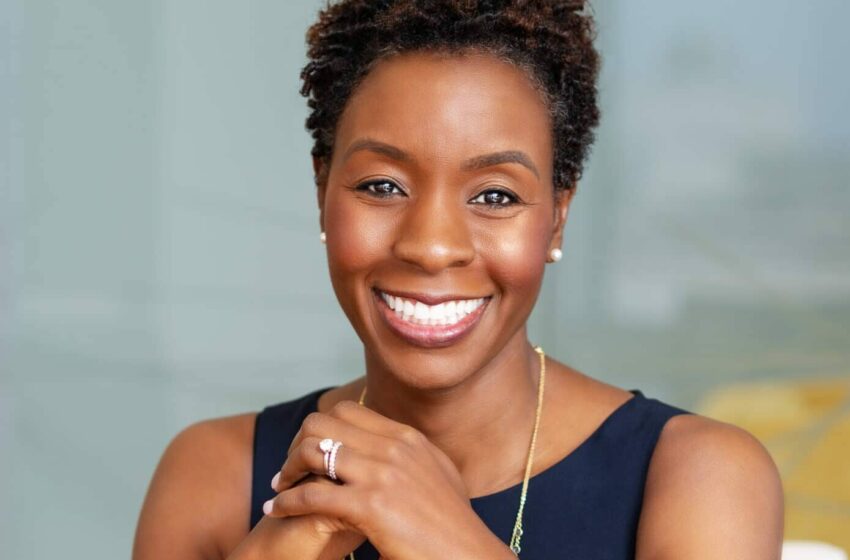In Search of… Top Executive Talent

Jaimee Eddington of Heidrick & Struggles on Transforming Businesses by Finding the Right People
Every hire your organization makes is critical, but perhaps no talent decision is more critical than who you bring into the executive suite.
This isn’t because executives are smarter or better than everyone else. It is because they are highly visible representatives of your company and makers of some of the organization’s most critical decisions. As leaders of their own organizations within the larger whole, executives have the ability to focus, motivate, and integrate their teams—or to frustrate, demoralize, and silo them.
Established nearly 70 years ago, Heidrick & Struggles is a top player in executive search, a $20 billion industry globally. Heidrick has evolved into a broader provider of global leadership advisory and on-demand talent solutions, helping the world’s top companies find the very best executive talent and advising them on their larger leadership, organization and workplace culture matters.
Jaimee Eddington is the Regional Leader of the Americas for Heidrick & Struggles and a Partner in the Dallas office. In her own work as a member of both the global Financial Officers and CEO & Board practices, she specializes in placing financial officers and board members. As a regional leader, her role covers all of North and South America.

We sat down with Jaimee to talk about the art of placing executive talent. She makes it clear that there is much more to the work than just trolling job boards. “People sometimes ask me about LinkedIn and other sites where people have resumes,” she says. “That’s not what executive search is. We meet people. We evaluate how they fit with the client’s particular opportunity, including everything from skillset to career goals to culture.”
In the interview below, she offers insights for companies seeking senior talent and senior talent seeking opportunities; discusses Heidrick& Struggles’ commitment to diversity; and assesses how hybrid work solutions are changing the executive-search game.
How did you get into a career in executive search? Was it something you always wanted to do?
I spent most of my career as an investment banker. When I was approached about an opportunity in executive search, I wasn’t too familiar with the industry. Most people aren’t. What I loved is the opportunity to match up amazing clients with amazing people. I also love the project nature of this business; and how it allows me to make a difference to a client’s landscape, whether they are looking to grow, restructure or just be better than they already are.
By whatever metric you use—market cap, revenue growth or just transformation—you can see that a good executive placement does make a difference. In my previous career, I might see an article in the Wall Street Journal, but here I can see real transformation in front of me, just by adding the right people to the team.
About a year ago, I was asked to lead the Americas for Heidrick & Struggles. We had an amazing year with record performance. We are leading the way in executive search and leadership consulting, as well as team assessments and on-demand talent. We are providing organizations with advanced tech-driven ways of finding people; evaluating talent; and thinking through succession planning and diversity initiatives. It has been great to see all this come together in one path forward for Heidrick.
What does a typical Heidrick client look like? What are the organizations you’re helping?
We run the gamut. We do Fortune 500 work, many for clients in the North Texas area. We also work with smaller, privately held companies in all types of industries, from oil and gas to technology to consumer products. In addition, we do social impact work, which is serving non-profits or other clients with smaller budgets.
What are some mistakes clients make when they engage an executive-search firm?
It is best when clients have a defined set of business goals and objectives. They may not know the specifics of what the next leader looks like, but they have a set goal for their business such as: “We are missing the right accounting and finance infrastructure; we need to implement a new ERP system to grow our business; or we want to go public, and need a board who can guide us through that process.” So if you come with a mission, those are conversations that we love having.
At the same time, you need to pair that mission with open-mindedness. Sometimes people come with a very narrow focus and that can be difficult. However, if you come in open-minded, we can help you think outside the box. We can actually help increase diversity of thought and add value to your organization in ways you may not even have imagined.
When evaluating executive talent, how do you balance a person’s experience level with their potential to grow?
We start by listening and understanding what a company wants to do. If their goals require a certain skillset or experience, we can come back and present you a diverse slate of people who meet the requirements, including some people who didn’t go to the exact school or have the exact title the client imagined. For example, someone may have been doing all the work of a head of IT and they’re highly talented, but they didn’t have the title and responsibility of head of IT. What is often more important than the previous title is the ability to grow and evolve to meet the client’s future needs.

If someone is an aspiring executive or a current executive who wants a bigger role, how do they get on the radar of someone like yourself?
I’ll start by saying that one of the misconceptions is that we work solely for clients. Companies come to us with a specific problem and we do work for them, but we also work for the talent we place.
Networking is important. Especially as you get further up in your career, I encourage people to build that network and let others know you’re looking. It is rare that the individuals we target find a job from an “online resource”. It’s through networks that we have conversations with people about opportunities and discover what someone is really looking to do.
Sometimes people live in fear of their current employer finding out they are looking, but sharing your background and experience with your network can open many different doors. Just take the call. Listening to the opportunity presented could give you a line of sight to something you hadn’t thought about or dreamed of in your career. Those opportunities can be life-changing in some cases.
Heidrick places emphasis on diversity in the candidates they present. Can you talk about that focus and how it’s developed over the past few years?
Internally, we have led with a mission to present a diverse slate of candidates to every client we serve. With the pandemic and the social unrest in 2020, many organizations found themselves at an inflection point. They took a step back to reexamine their fundamental purpose.
The whole talent pipeline is continuing to grow in diversity as people take a step back and think about how to have an inclusive orientation. Our 2021 Board Monitor report showed there was notable progress in the appointment of new black directors, with a jump of 28 percent in 2020 compared to just 10 percent in 2019. We are building on that momentum and also doing sustained outreach to Latinx, Asian, and LGBTQ executives. In our 2021 Route to the Top report, we showed that progress has been made in the CEO ranks as well. There were 13 new CEOs appointed in the Fortune 100 between January 1, 2021, and July 5, 2021; four of those were women, and two were black women. We love to see those statistics.
If you let the same existing people pick the same new people, you’re probably going to end up with more of the same type of people.
Would you have any advice for a CEO who realizes their company has some blind spots in area of diversity?
I would say keep yourself open to somebody who may not fit all the criteria. If you have a list of 10 must-haves, it will be a very narrow slate. If you narrow it down to two or three things, then we can meet those requirements and get you thinking more broadly about who goes into that role. We ask people to come in with an open mind; meet people; and evaluate them based on what they are trying to do versus a whole laundry list of criteria. If you let the same existing people pick the same new people, you’re probably going to end up with more of the same type of people. You can even open up your company Rolodex and invite junior people to participate in the process. They might have different perspectives on what is important.
When you talk about DEI initiatives with people, do you ever get pushback or resistance?
We meet people where they are. Very rarely does someone say, “I’m not interested in diversity.” People want to grow their business. One of the things we lead with is, “I’m going to bring you a diverse slate.” If I don’t bring you diversity, how can I expect you to build a diverse team? Then we talk about the trade-offs. Yes, you might be more familiar with or inclined to want this person, but these other folks might offer you something different and new. We want to get people seeing those opportunities. We can’t force it, but as long as we present it, we’re doing our job.
What about working remotely? Has that changed how you operate at all?
We have seen work-from-home being one of the dials you can twist to get people to move to a new organization. In addition to compensation and benefits, you can offer people a flexible or fully remote model. Those things matter to people more than ever. Over the course of this pandemic, some people found excitement spending more time with their kids or their pets, and not having to do the commute every day. Chewy [the pet-product retailer] has seen record performance with people acquiring animals during the pandemic.
We get our client to think about that at the very beginning: What is the model you’re trying to create? If you give people some flexibility, you are going to see more of the people you want to attract.
The way that we interview people is different now, too. We are doing more interviews via Zoom . Nothing is going to replace shaking someone’s hand or sitting down for dinner, but we’ve had to add some flexibility to our approach as well.
Today, more women than men say they want to work from home. Do you think these changes potentially giving women more opportunity for roles they might not have had before?
I think it’s twofold. I do think women may be getting more opportunities, which is great. However, we have to be very careful about not limiting their potential. If we give some people flexible opportunities, we need to be intentional about the way they are mentored and sponsored, as well as their interactions. Responsibility for this falls on both the company and the individual. Yes, it is nice that you get to work from home, but you have to be more intentional about building relationships; going into the office when people are there; and using that as a mechanism to build your career. You can’t rest on your laurels.
Are there any signs that someone will be a really good executive?
We have an evaluation tool which looks at experience, agility, leadership skills, communication skills; and culture fit. Evaluating someone on those points is much deeper than reading a resume. We also get to know them personally. We use all our resources to see whether they will be the right fit for the opportunity.
It’s more about the fit than looking for a universal trait. Sometimes the matches are unexpected. You might be doing a board search for your travel and leisure company We might identify someone who works at a manufacturing company, but is passionate about travel and leisure. We see them bringing an engineering and manufacturing mindset to the role, combining their passion for the industry with a level of discipline you don’t have right now.
How did you end up in Texas? Do you see executive-level people wanting to move here more often now that so many companies are relocating here?
I came for a job a number of years ago. I left and then came back again. I think Texas is amazing. Having lived here during the past two decades, I have seen a tremendous amount of growth and opportunity. The landscape is changing as it relates to diversity, including in Dallas. The city, as a market for travel and living, is wildly attractive to people. Having a good airport is great, especially with a flexible, hybrid work model. And, it doesn’t hurt when you see big tech companies moving their headquarters here. That’s encouraging for what’s next for Texas. My role and responsibilities cover Canada, the U.S., Mexico, and Brazil, but it’s amazing to be able to do that from Texas.




